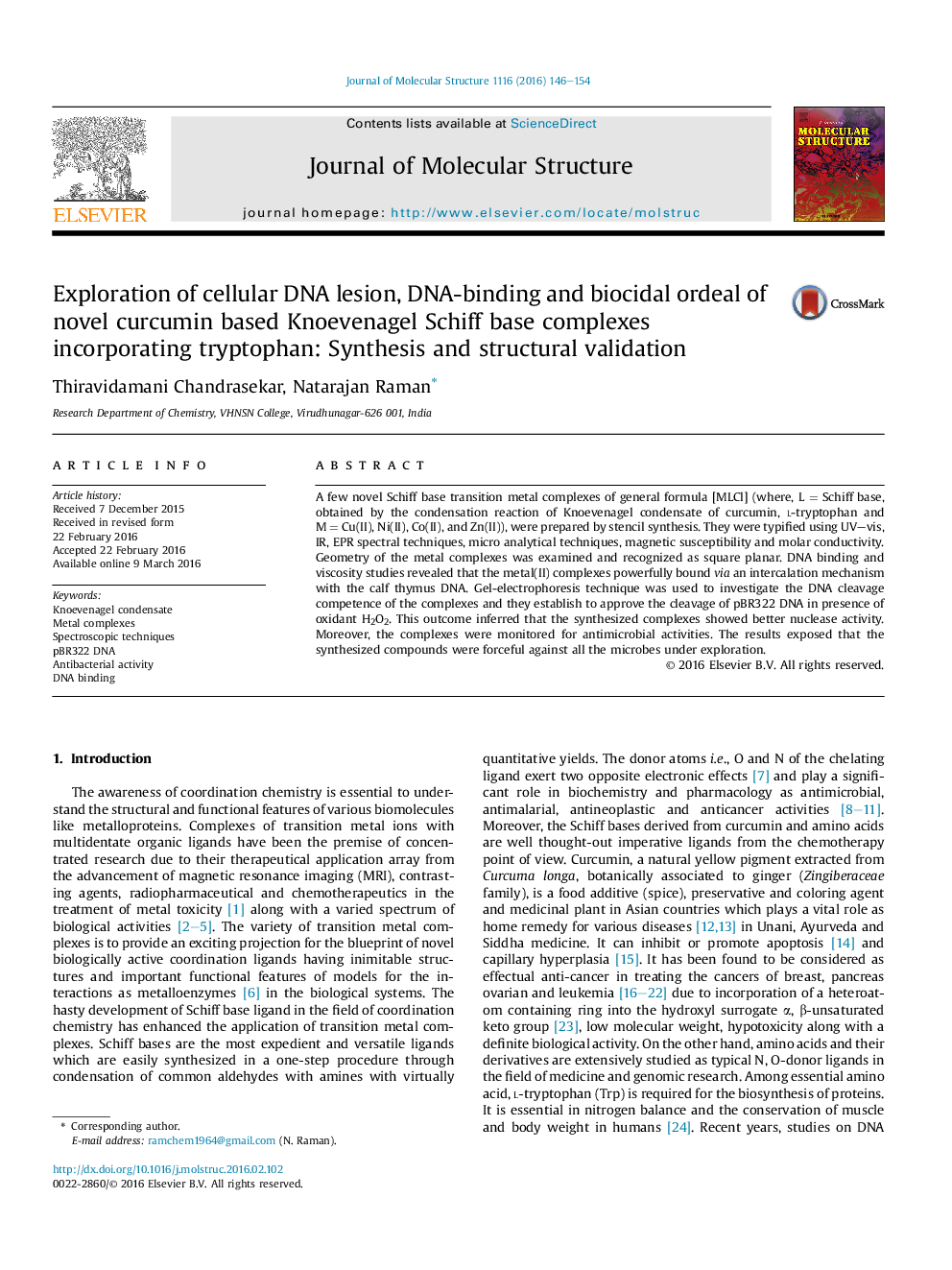| Article ID | Journal | Published Year | Pages | File Type |
|---|---|---|---|---|
| 1407785 | Journal of Molecular Structure | 2016 | 9 Pages |
•Synthesis of curcumin based metallonucleases.•Enhanced intercalating binding effect of the synthesized complexes.•Prominent antimicrobial activity against few microbes.•Copper(II) complex has better antimicrobial profile.
A few novel Schiff base transition metal complexes of general formula [MLCl] (where, L = Schiff base, obtained by the condensation reaction of Knoevenagel condensate of curcumin, l-tryptophan and M = Cu(II), Ni(II), Co(II), and Zn(II)), were prepared by stencil synthesis. They were typified using UV–vis, IR, EPR spectral techniques, micro analytical techniques, magnetic susceptibility and molar conductivity. Geometry of the metal complexes was examined and recognized as square planar. DNA binding and viscosity studies revealed that the metal(II) complexes powerfully bound via an intercalation mechanism with the calf thymus DNA. Gel-electrophoresis technique was used to investigate the DNA cleavage competence of the complexes and they establish to approve the cleavage of pBR322 DNA in presence of oxidant H2O2. This outcome inferred that the synthesized complexes showed better nuclease activity. Moreover, the complexes were monitored for antimicrobial activities. The results exposed that the synthesized compounds were forceful against all the microbes under exploration.
Graphical abstractFigure optionsDownload full-size imageDownload as PowerPoint slide
